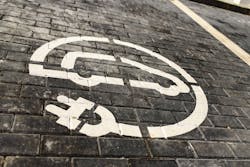In addition to grid modernization initiatives to ready the power grid, utilities are making considerable investments in charging infrastructure. Notably, a consortium of more than 50 electric utilities – including Con Edison, Xcel Energy, Southern Company and the Tennessee Valley Authority – recently formed to facilitate the installation of fast-charging stations along major U.S. travel corridors by the end of 2023.
While these infrastructure advances are a crucial foundation for the EV future, the Smart Energy Consumer Collaborative (SECC), a nonprofit research group, recently conducted an online survey to reveal how utilities can improve the experience for their residential customers as this transition takes place. The survey reached 1,000 residential customers across the United States (aligned to U.S. Census data), plus an additional sample of 750 current owners of an EV.
The research revealed that utilities have a key role to play in educating consumers during this transition as many are currently unknowledgeable about EVs, battery ranges, how charging works, charging availability in their communities, etc. Utilities are particularly well-suited to provide this information to consumers since, while few consumers currently look to their utilities as a source for EV-related information, 97 percent of consumers consider their electric utility a trustworthy source on electric vehicles.Despite the increasing presence of EVs on American roads, the new research revealed a significant education gap between EV owners and non-adopters. When asked to correctly identify the differences between types of EV chargers, many respondents struggled, including current EV owners; however, there’s a considerable gap between owners and non-owners. For example, about half (48 percent) of EV owners correctly identified Level 3 charging, compared to just 23 percent of non-owners.
The education gap goes beyond being able to correctly name charging levels and types of EVs, though. Most non-adopters simply have no real-world experience with electric vehicles at all. Only one-quarter (26 percent) know someone that has an EV, and only nine percent have driven one themselves. Nearly two-thirds (61 percent) stated that they have had no experience with EVs whatsoever.
These findings suggest that electricity providers can play a clear role in delivering hands-on experience to consumers that may be interested through ride-and-drive events and other forms of community outreach. One example of a program that can help close this education gap is Cobb EMC’s Electric Vehicle Checkout, which allows customers to take an EV home for a few days and drive it during the normal routine. And as part of their Up & Go Electric initiative, Puget Sound Energy offers numerous community ride-and-drive events each year.
When asked about their top concerns around EVs in the survey, respondents who haven’t purchased an EV were clear that battery ranges and charging convenience (both the length of time it takes to charge and the availability of chargers in their community) remain major hurdles – despite significant improvements in this area in the past few years. Half of non-adopters say they’re concerned “the battery won’t have enough range to get me where I need to go”, and 46 percent are concerned that charging the battery will take too long. Forty-five percent state that “charging stations are not convenient for me to access”. Again, utilities are well-positioned to provide information about charging stations in their service territories, as well as information about current EVs, including battery ranges.
Austin Energy’s EV Buyer’s Guide is a comprehensive online resource that helps consumers learn about EVs, including available local inventory of electric and plug-in hybrids where consumers can input their needs (such as average daily commute) and get personalized recommendations for vehicles. Consumers can also use the EV Buyer’s Guide to locate charging stations in their community, to learn more about charging and range on the FAQ page and to get an incentive of up to $1,200 for installing a home charger.
Finally, while most current owners of EVs are very satisfied with their electric vehicles (owners rate them an 8.9 on a 10-point scale), one of EV owners’ top challenges is that charging costs have been higher than they anticipated. Utilities are currently exploring several means of addressing this challenge, including low-cost charging in the community and EV-specific rate plans.
Duke Energy recently proposed a program that would allow EV drivers in North Carolina to charge their vehicle for just $19.99 per month. In exchange, the customer would allow Duke to manage the vehicle’s charging for up to three events each month in order to avoid grid stress and higher costs. Other utilities, such as Southern California Edison and Baltimore Gas and Electric, are offering time-of-use rate plans that allow for inexpensive off-peak charging at home. Cobb EMC’s NiteFlex rate even allows for 400 kWh of free overnight charging each month.
As electric utilities continue to make infrastructure improvements to prepare for the coming EV revolution, it’s important that they also plan customer engagement and education strategies that help their residential customers navigate this new technology. Research shows that consumers trust their utilities to provide accurate information in this area, and by doing so, utilities can better position themselves as a trusted partner for customers going forward.
Nathan Shannon is president and CEO of Smart Energy Consumer Collaborative.
About the Author
Nathan Shannon
Nathan is SECC's President & CEO and leads the organization's research, membership and policy initiatives. He came on as SECC's Deputy Director in early 2015, and in this role, he grew membership almost 40% to over 150 members. Along with his work on the Research and Policy committees, Nathan leads member recruitment and engagement and routinely presents SECC 's research at major industry conferences and policy workshops around the country. He previously served as Director of Operations and Major Gifts Officer at Athens Land Trust where he had a focus on policy and sustainability through his work with land conservation and carbon credits. He also gained extensive knowledge in the realm of non-profit development and capacity building. Nathan has a Bachelors in Economics from the University of Georgia and a background in financial management.
